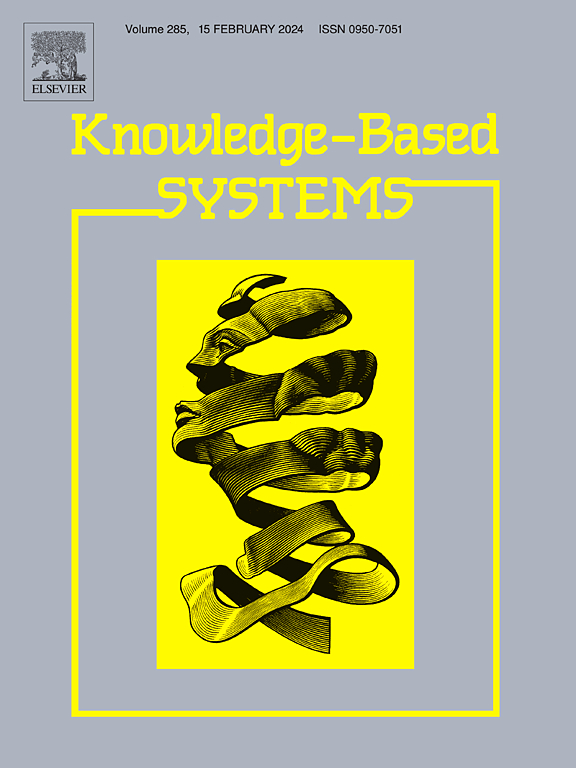Mutual information-driven self-supervised point cloud pre-training
IF 7.2
1区 计算机科学
Q1 COMPUTER SCIENCE, ARTIFICIAL INTELLIGENCE
引用次数: 0
Abstract
Learning universal representations from unlabeled 3D point clouds is essential to improve the generalization and safety of autonomous driving. Generative self-supervised point cloud pre-training with low-level features as pretext tasks is a mainstream paradigm. However, from the perspective of mutual information, this approach is constrained by spatial information and entangled representations. In this study, we propose a generalized generative self-supervised point cloud pre-training framework called GPICTURE. High-level features were used as an additional pretext task to enhance the understanding of semantic information. Considering the varying difficulties caused by the discrimination of voxel features, we designed inter-class and intra-class discrimination-guided masking (IMask) to set the masking ratio adaptively. Furthermore, to ensure a hierarchical and stable reconstruction process, centered kernel alignment-guided hierarchical reconstruction and differential-gated progressive learning were employed to control multiple reconstruction tasks. Complete theoretical analyses demonstrated that high-level features can enhance the mutual information between latent features and high-level features, as well as the input point cloud. On Waymo, nuScenes, and SemanticKITTI, we achieved a 75.55% mAP for 3D object detection, 79.7% mIoU for 3D semantic segmentation, and 18.8% mIoU for occupancy prediction. Specifically, with only 50% of the fine-tuning data required, the performance of GPICURE was close to that of training from scratch with 100% of the fine-tuning data. In addition, consistent visualization with downstream tasks and a 57% reduction in weight disparity demonstrated a better fine-tuning starting point. The project page is hosted at https://gpicture-page.github.io/.
互信息驱动的自监督点云预训练
从无标记的三维点云中学习通用表征对于提高自动驾驶的通用性和安全性至关重要。以低级特征作为前置任务的生成式自监督点云预训练是一种主流模式。然而,从互信息的角度来看,这种方法受到空间信息和纠缠表征的限制。在本研究中,我们提出了一种名为 GPICTURE 的广义生成式自监督点云预训练框架。高层特征被用作额外的前置任务,以增强对语义信息的理解。考虑到体素特征的辨别会造成不同的困难,我们设计了类间和类内辨别引导的掩蔽(I2Mask),以自适应地设置掩蔽比例。此外,为了确保分层和稳定的重建过程,我们采用了中心核配准引导的分层重建和差异门控的渐进学习来控制多个重建任务。完整的理论分析表明,高层特征可以增强潜在特征与高层特征以及输入点云之间的互信息。在 Waymo、nuScenes 和 SemanticKITTI 上,我们实现了 75.55% 的三维物体检测 mAP、79.7% 的三维语义分割 mIoU 和 18.8% 的占用预测 mIoU。具体来说,GPICURE 只需要 50% 的微调数据,其性能就接近于使用 100% 微调数据从头开始训练的结果。此外,与下游任务的可视化效果一致,权重差异减少了 57%,这表明微调起点更好。项目页面托管在 https://gpicture-page.github.io/。
本文章由计算机程序翻译,如有差异,请以英文原文为准。
求助全文
约1分钟内获得全文
求助全文
来源期刊

Knowledge-Based Systems
工程技术-计算机:人工智能
CiteScore
14.80
自引率
12.50%
发文量
1245
审稿时长
7.8 months
期刊介绍:
Knowledge-Based Systems, an international and interdisciplinary journal in artificial intelligence, publishes original, innovative, and creative research results in the field. It focuses on knowledge-based and other artificial intelligence techniques-based systems. The journal aims to support human prediction and decision-making through data science and computation techniques, provide a balanced coverage of theory and practical study, and encourage the development and implementation of knowledge-based intelligence models, methods, systems, and software tools. Applications in business, government, education, engineering, and healthcare are emphasized.
 求助内容:
求助内容: 应助结果提醒方式:
应助结果提醒方式:


